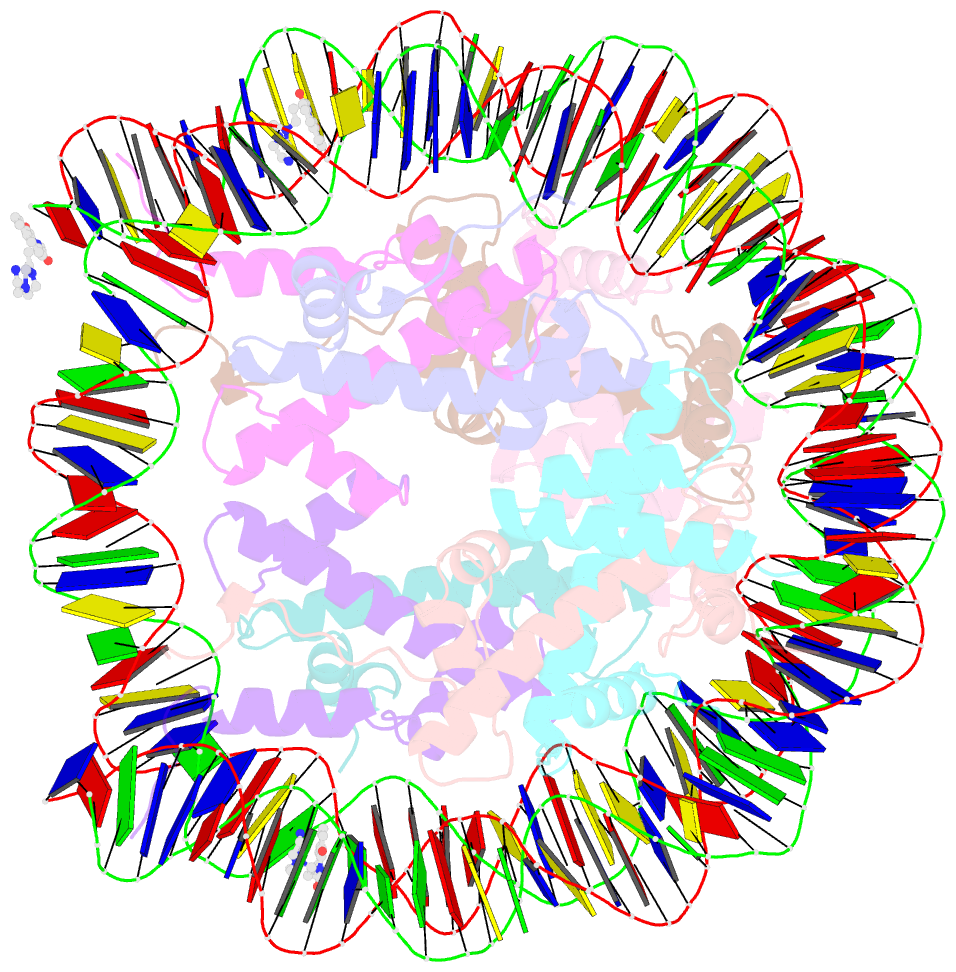Summary information and primary citation
- PDB-id
- 4wu9; SNAP-derived features in text and JSON formats;
DNAproDB
- Class
- structural protein-DNA
- Method
- X-ray (2.6 Å)
- Summary
- Structure of cisptnap-ncp145
- Reference
- Chua EY, Davey GE, Chin CF, Droge P, Ang WH, Davey CA (2015): "Stereochemical control of nucleosome targeting by platinum-intercalator antitumor agents." Nucleic Acids Res., 43, 5284-5296. doi: 10.1093/nar/gkv356.
- Abstract
- Platinum-based anticancer drugs act therapeutically by forming DNA adducts, but suffer from severe toxicity and resistance problems, which have not been overcome in spite of decades of research. And yet defined chromatin targets have generally not been considered in the drug development process. Here we designed novel platinum-intercalator species to target a highly deformed DNA site near the nucleosome center. Between two seemingly similar structural isomers, we find a striking difference in DNA site selectivity in vitro, which comes about from stereochemical constraints that limit the reactivity of the trans isomer to special DNA sequence elements while still allowing the cis isomer to efficiently form adducts at internal sites in the nucleosome core. This gives the potential for controlling nucleosome site targeting in vivo, which would engender sensitivity to epigenetic distinctions and in particular cell type/status-dependent differences in nucleosome positioning. Moreover, while both compounds yield very similar DNA-adduct structures and display antitumor cell activity rivalling that of cisplatin, the cis isomer, relative to the trans, has a much more rapid cytotoxic effect and distinct impact on cell function. The novel stereochemical principles for controlling DNA site selectivity we discovered could aid in the design of improved site discriminating agents.





